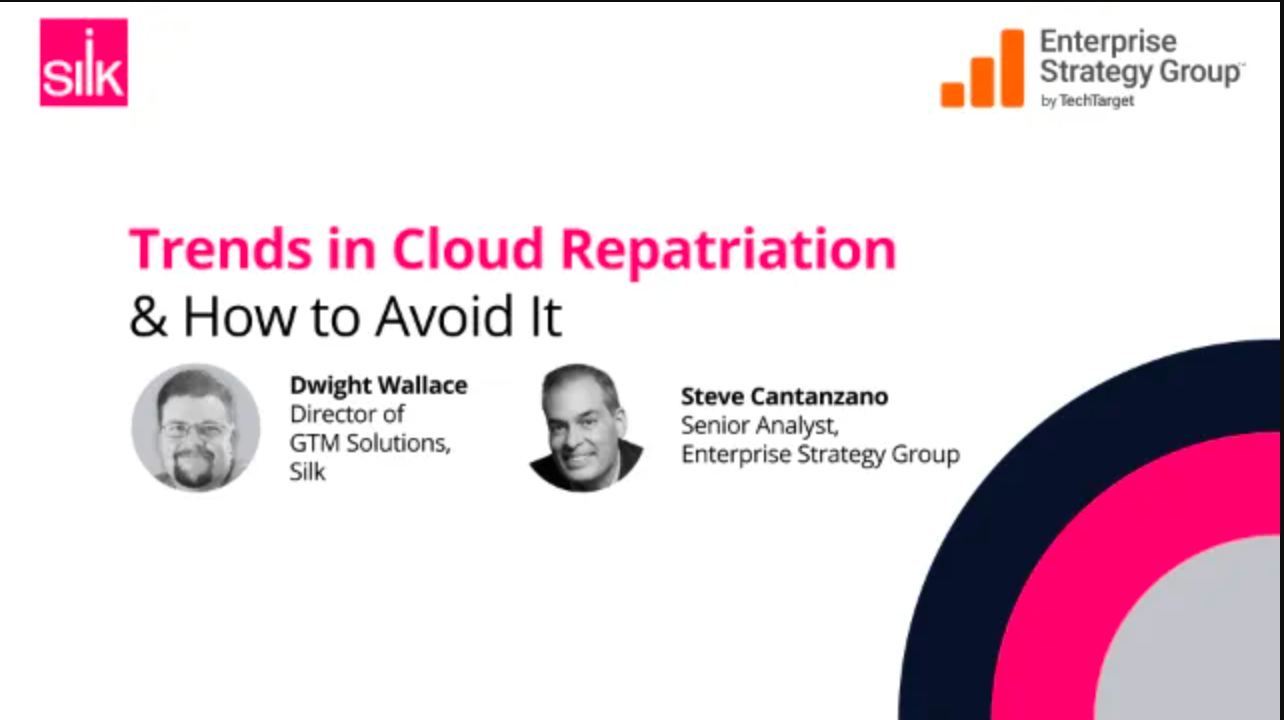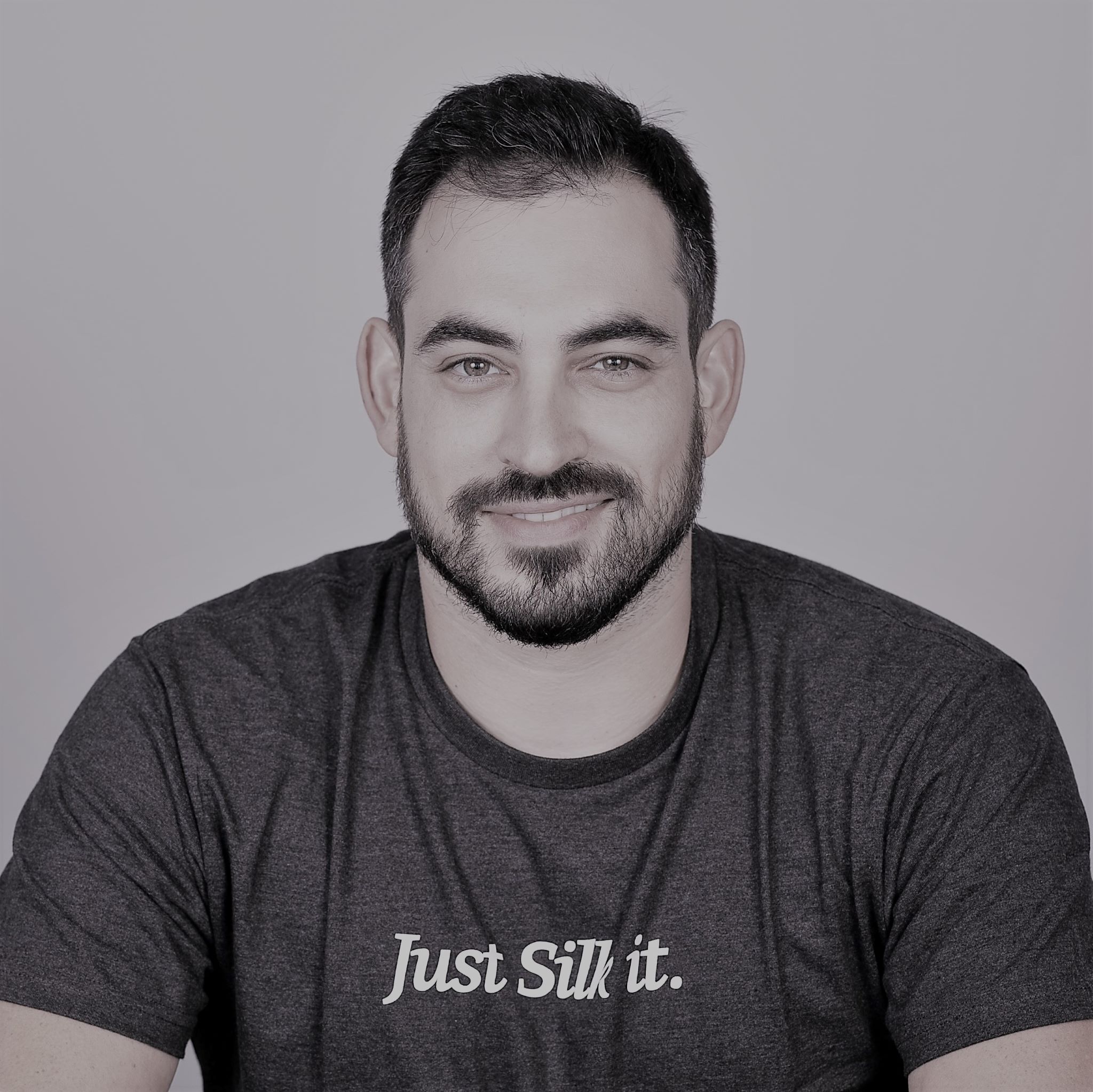The FinOps Survival Guide for Cloud Databases
Webinar Transcript
The FinOps Survival Guide for Cloud Databases
Executive Summary
In this webinar, Ori Wiseman, Director of Sales Engineering for Silk (EMEA), and David Berliner, Senior Director of Product at Silk, share how organizations can apply FinOps principles to control cloud database costs. They discuss transitioning from CapEx to OpEx models, the pitfalls of over-provisioning, and how to manage runaway spend with smarter architecture and tools like Silk’s TCO calculator.
Key Takeaways
💰 CapEx vs. OpEx Shift: Moving from upfront capital purchases to ongoing operational costs changes how organizations must think about budgeting and resource control.
⚙️ Avoid Over-Provisioning: Cloud storage performance is often tied to compute size; Silk decouples this relationship to optimize both performance and cost.
📊 Embrace FinOps Practices: Continuous monitoring, tagging, and optimization are essential to maintaining control over distributed cloud resources.
🧮 Use TCO Modeling: Building accurate Total Cost of Ownership analyses reveals where cost overruns occur and where savings opportunities exist.
🚀 Partner, Don’t Just Purchase: Vendors sell technology — partners like Silk provide ongoing transparency and architectural guidance to ensure sustainable savings.
[00:00:00] Introduction
Ori Wiseman (Silk):
Welcome back! This session is The FinOps Survival Guide for Cloud Databases.
I’m Ori Wiseman, Director of Sales Engineering for Silk across the EMEA region. Before Silk, I worked in consulting, focusing on TCO analysis and technology pricing.
With me is our resident expert — David, please introduce yourself.
David Berliner (Silk):
Thanks, Ori. I’m the Senior Director of Product at Silk. I’ve spent the past few years helping customers evaluate total cost of ownership, understand cloud cost structures, and uncover opportunities to optimize spend.
[00:01:00] From CapEx to OpEx: A Mindset Shift
Ori:
Many companies are still running workloads on-prem or in colocation facilities. Moving to the cloud means shifting from CapEx (upfront hardware purchases) to OpEx (ongoing service costs).
That sounds simple, but it’s a massive mental shift for operations teams — you’re no longer buying equipment once; you’re paying continuously for what you use. If you forget to turn something off, it just keeps costing you money.
David:
Exactly. In the CapEx world, teams sized hardware for current and future needs. In the cloud, those same habits lead to over-provisioning. You pay for unused capacity, and performance dependencies between compute and storage can compound costs.
[00:03:00] New Cloud Realities
Ori:
In the cloud, performance often scales with CPU and core count — unlike on-prem, where you could tune storage independently. This creates inefficiency.
David:
Right. Plus, with the cloud’s self-service model, it’s easier than ever for teams to spin up resources. That flexibility is great for speed but risky for cost management.
Without consistent tagging, usage tracking, and chargeback processes, organizations quickly lose visibility into spend.
Ori:
That’s where Silk helps — by breaking the link between compute size and storage performance, so customers can achieve high performance without overspending.
[00:06:00] Aligning Databases with Cloud Providers
Ori:
When migrating databases, many organizations don’t consider how database type and cloud provider incentives interact.
For example:
Moving SQL Server to Azure offers Azure Hybrid Benefit licensing savings.
Moving Oracle to Azure provides no such discount.
That mismatch can significantly impact cost — unless you’re using a platform like Silk, which helps reduce infrastructure requirements regardless of provider.
David:
Exactly. Cloud migrations can look simple but quickly get expensive if you don’t optimize. Silk’s thin provisioning, compression, and instant clones help reduce waste while speeding up development and testing.
[00:08:00] Managing Runaway Cloud Costs
Ori:
Early in my consulting career, I saw how easily cloud costs spiral. Someone forgets to shut off a VM — and that happens across hundreds of projects. Suddenly, budgets are blown.
David:
Runaway costs are often due to data duplication and storage sprawl. Without Silk, every copy of a dataset creates a new storage allocation — even if you only use a fraction of that capacity.
Cloud success requires FinOps discipline: tracking, forecasting, and controlling cost drivers across every team.
[00:10:00] Cloud Savings Strategies
David:
Every major cloud provider offers discounted pricing models — like Savings Plans, Reserved Instances, or Committed Use Discounts — in exchange for predictable usage.
The trick is planning:
Identify short-term vs. long-term workloads.
Apply commitment-based savings where stable.
Keep flexibility for variable workloads.
Ori:
Exactly. On-prem planning was static; cloud FinOps requires continuous evaluation. That’s why dedicated FinOps teams now exist — to make cloud spending predictable, not reactive.
[00:13:00] Visibility Through the FOCUS Framework
David:
Visibility is everything. The cloud complicates cost tracking — each provider reports usage differently.
The FinOps Foundation introduced the FOCUS framework (FinOps Open Cost and Usage Specification) to standardize how cloud cost data is reported and shared.
As adoption grows, organizations will be able to tie costs across compute, storage, and licensing, improving transparency and cost optimization accuracy.
[00:15:00] The Power of TCO Analysis
Ori:
At Silk, we lead every customer engagement with a Total Cost of Ownership (TCO) analysis.
We separate fixed and variable costs to identify over-provisioning and inefficiency. Silk’s TCO modeling helps customers predict and flatten future cost growth — transforming exponential “L-shaped” expense curves into steady, predictable trajectories.
David:
Exactly. Our TCO framework focuses on three layers of spend:
Storage
Database Hosts
Database Licensing
We don’t just collect pricing data — we study architecture, availability zones, replication strategies, and ETL pipelines to build a holistic cost picture.
[00:18:00] From Vendor to Partner
Ori:
Here’s a key distinction: vendors sell you a product. Partners guide you through real-world costs, trade-offs, and scaling decisions.
At Silk, transparency is part of the process. We help customers avoid surprises on their monthly cloud bills.
David:
Right. It’s not about painting a perfect picture — it’s about providing an accurate one. We’d rather show the full cost model now than let customers discover it later.
[00:20:00] Demo: Silk’s TCO Calculator
Ori:
David, can we take a look at the TCO calculator you mentioned?
David:
Of course. We’ve built a self-service TCO calculator at silk.us
. It gives an initial estimate of potential savings.
Example scenario:
Environment: Azure Ultra Disk + Premium SSD v2
Setup: High availability
Compute: 256 vCPUs per environment
Storage: 60 TB per environment
👉 Result: ~37% savings over 3 years with Silk.
For larger setups — 1,024 vCPUs and 1 PB of data — savings climb to 64% or $15 million.
Ori:
That’s impressive. Even as a directional estimate, it quickly shows where over-provisioning is hurting you.
[00:25:00] Real-World Example
Ori:
We have a customer who discovered that while their storage costs were modest, their VM costs were astronomical — nearly $1 million per host.
They had to scale VMs just to meet storage performance requirements. Silk broke that dependency, allowing them to reduce compute spend dramatically while maintaining throughput.
David:
Exactly. The goal is to optimize the full cost stack — compute, storage, and licensing — not just one layer.
[00:27:00] Closing Remarks
Ori:
David, thanks again — this was another fantastic discussion.
David:
Always a pleasure, Ori.
Ori:
To everyone watching: if you’d like help with FinOps strategy, TCO modeling, or cloud cost optimization, reach out to us directly on LinkedIn — QR codes are included at the end of the video.
We’re happy to offer guidance, even if you’re not a Silk customer yet.
Thanks for joining us, and we’ll see you next time!




